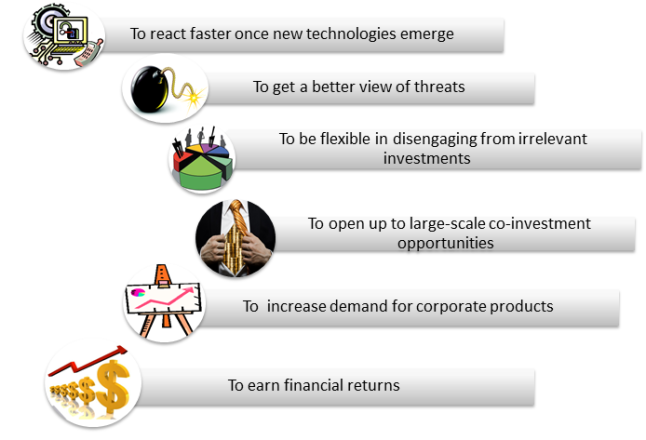 Disentangling business failures is not always a straightforward task . But when it is, such as in case of Kodak, learnings are far reaching. In retrospective, Kodak’s story presents a strategic pitfall: they ignored the disruptive technology of digital cameras for the sake of traditional film business. Indeed, Kodak is a classic illustration of going the wrong way when faced with the Innovator’s Dilemma.
Disentangling business failures is not always a straightforward task . But when it is, such as in case of Kodak, learnings are far reaching. In retrospective, Kodak’s story presents a strategic pitfall: they ignored the disruptive technology of digital cameras for the sake of traditional film business. Indeed, Kodak is a classic illustration of going the wrong way when faced with the Innovator’s Dilemma.
Vince Barabba, a former Kodak Executive in charge of market intelligence, offers a flashback on what could have prevented the disaster. One of the four key elements of Barabba’s advice for corporate decision making, is adaptability of business design. Depending on how predictable its market is, a firm should choose the business design accordingly – make-and-sell, sense-and-respond, or anticipate-and-lead. Kodak chose the first one. Ironically, one of the earliest digital cameras was in fact invented in 1975 by Steve Sasson, Kodak’s engineer. But Kodak suggested that Mr Sasson abandon his project. Vince Barabba’s tech trends analysis suggested that Kodak had 10 years to keep up with the digital trends, yet top management did not hear the wake up call.
So can big corporations actually lead disruptive innovation instead of running away from it? The case of Kodak suggests that even the brightest R&D efforts might be buried under debris of corporate politics or competing interests of business units. Despite these obstacles, a recent article in Forbes suggests that large companies can still out-innovate start-ups. The author puts together 8 rules corporates should follow to make innovation happen. Some of those are absurdly trivial (like “Start from a clean sheet of paper”), others – common sense, yet hardly implementable (“Invest only small amounts and test a number of possibilities.”). In any case, I got skeptical: from what I’ve seen, it doesn’t happen overnight that old guys start playing by new rules, even if they bring along some clean sheets of paper.
When it comes to innovation, speed is the king. Unlike Kodak, which had roughly 10 years to act, modern firms face more pressing implementation deadlines. One way to react faster is to bring innovation from outside instead of relying on internal R&D efforts. If you want a ready-made solution, M&A is one way to go. It’s costly, however, and is said to destroy value. How about bringing external innovation in-house and making some money along the way? Josh Lerner’s Harvard Business Review article provides five compelling reasons why large companies might benefit from corporate venturing.  Corporate-backed VCs co-existed with R&D divisions for years. Lerner argues that corporate venture capital funds, if granted enough autonomy, can be a good hedge against R&Ds shortcomings, such as slow response time, sunk cost fallacy and path dependence. But how to ensure that corporate VCs actually create value? Let’s take a look at some examples.
Corporate-backed VCs co-existed with R&D divisions for years. Lerner argues that corporate venture capital funds, if granted enough autonomy, can be a good hedge against R&Ds shortcomings, such as slow response time, sunk cost fallacy and path dependence. But how to ensure that corporate VCs actually create value? Let’s take a look at some examples.
Intel’s venture capital arm is a classic success story. Seeking both financial and strategic returns, Intel Capital outperforms its stand alone peers by the number of exits (see PrivCo 2014 ranking of most successful VCs). In terms of strategic returns, Ecosystem investment is one of the cornerstones of its strategy: VC fund can help raise demand for Intel’s products by investing in startups that rely on Intel’s technologies. For example, the adoption of Intel’s new generation semiconductor chips in 1998 was accelerated by investing in hardware makers (often Intel’s competitors) that utilized chip’s new power. As a result, the chip was widely adopted around 7 months earlier than it would have been otherwise. Intel Capital’s portfolio companies come from a wide range of technology spheres, but the VC fund keeps following the original principles behind its investment decisions: Ecosystem (start-ups relying on Intel’s technologies), Market Development (start-ups accelerating technology adoption in the emerging markets), Gap Fillers (start-ups start-ups helping Intel market its products), and Eyes & Ears (start-ups with potentially disruptive technologies). But the fund claims not to be serving as a feeder to Intel Corporation, rather, to seek the best exit possible. Well, judging from its astonishing 22 exits in 2013 alone, it seems to live up to that promise. 
Establishing a whole venture capital arm of the corporation is not the only option. For example, Apple outsourced its corporate venturing activities from KPCB (Kleiner Perkins Caufield & Byers) Venture Partners. Apple’s iFund was launched on March 6 2008, simultaneously with opening iOS development kit to outsiders for the first time. The $100 mln. iFund managed by KPCB, helped Apple rapidly build a critical mass of applications for its new phone while spending very little. This way, Apple leveraged the power of iOS platform , thus increasing the demand for its own products. The fund invests mainly in companies developing games and tools relying on iOS SDK, and it did well enough for Apple to double it to $200 mln. in 2010. Is this approach superior to in-house venturing efforts, such as in case of Intel? One consideration is the goal to be achieved. Creating a demand-stimulating ecosystem around a corporate platform (e.g. Apple’s iOS) or product (e.g. Intel’s new generation chips) can be accomplished just by establishing a dedicated investment vehicle within an external VC. The advantages of this approach is fast execution, minimized internal conflicts of interest (e.g. between corporate VC and R&D divisions) and bypassing the inevitable inefficiencies of corporate investment decision making. However, if achieving a wider range of objectives, such as sensing the latest developments in technology and reacting to disruptions strategically, is possible only with an affiliated corporate VC. Another consideration is transparency. As only a few iFund’s investments are disclosed (5 companies revealed, out of 25 investments as of 2011), it certainly aligns well with Apple’s overall secretive strategy. Corporate venturing, on the other hand, would certainly require more publicity about portfolio companies at the very least. 
Google Ventures, established in 2009 in the US and recently expanded into Europe , is a relatively new player on the corporate VC scene. They stand closest to independent VCs, claiming to provide funding solely on the basis of start-ups’ potential, without seeking any strategic returns for Google. It looks like Google is doing it by the book (Lerner argues in his article that the more independent the VC fund is, the better it performs in providing financial returns). Placed 13th in PrivCo 2014 ranking, and with investments like Uber, Homejoy and Focusign, $300 mln. funded Google Ventures can become another success story. For now, it’s too early to make judgments about this 5-year old VC.
With quite a few success stories, but also plenty of silent failures, corporate venturing has established itself as an almost must-have for a modern tech-reliant corporation. Then, it’s just a matter of making it work. Such examples as Intel Capital, iFund and Google Ventures prove the importance of setting clear objectives for a corporate VC: be it financial returns, market sensing or ecosystem enhancement. But would corporate venturing have saved Kodak? In terms of innovation and VCs, it’s a question of the chicken or the egg. I’d argue there was little chance that Kodak came up with a successful VC.
P.S. Yeah, turns out, there was such thing as Kodak Ventures. No news about it though: the only links I found were this one, and a “page not found” message on Kodak’s web-site.

